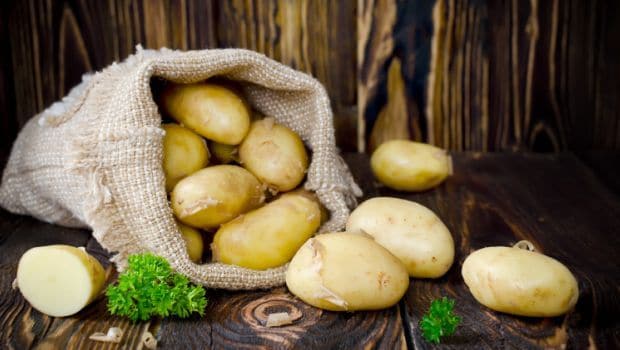The potato was originally believed to have been domesticated independently in multiple locations but later genetic testing of the wide variety of cultivars and wild species proved a single origin for potatoes in the area of present-day southern Peru and extreme northwestern Bolivia where they were domesticated approximately 7,000–10,000 years ago.Ancient spuds recently dug up on Canada's Pacific coast are blackened and surely unedible, but are the first proof, say researchers, that North American natives tended gardens at least 3,800 years ago.The excavated potato patch on the ancestral lands of the Katzie tribe in British Columbia is "the first evidence" of gardening by local hunter-gatherers of the era, according to a study published in the journal Science Advances' December issue.
Archeologists led by Tanja Hoffmann and Simon Fraser University concluded that the inhabitants of the Pacific Northwest had engineered the wetland to amplify production of the wild food plant. They installed a rock pavement that "formed a boundary for the cultivation" of the potatoes, which were found in growing position.Also discovered at the site was close to 150 fire-hardened wood tool fragments, believed to have been the tips of "digging sticks." Typically harvested from October to February, wapato was an important dietary source of starch through the winter months.The archeological excavation recovered 3,768 wapato tubers, also called Indian potatoes."The remains were dark brown to black in color, and although only the exterior shell or skin survived on many, some also had the starchy material inside," said the study.
Archeologists led by Tanja Hoffmann and Simon Fraser University concluded that the inhabitants of the Pacific Northwest had engineered the wetland to amplify production of the wild food plant. They installed a rock pavement that "formed a boundary for the cultivation" of the potatoes, which were found in growing position.Also discovered at the site was close to 150 fire-hardened wood tool fragments, believed to have been the tips of "digging sticks." Typically harvested from October to February, wapato was an important dietary source of starch through the winter months.The archeological excavation recovered 3,768 wapato tubers, also called Indian potatoes."The remains were dark brown to black in color, and although only the exterior shell or skin survived on many, some also had the starchy material inside," said the study.
Advertisement










